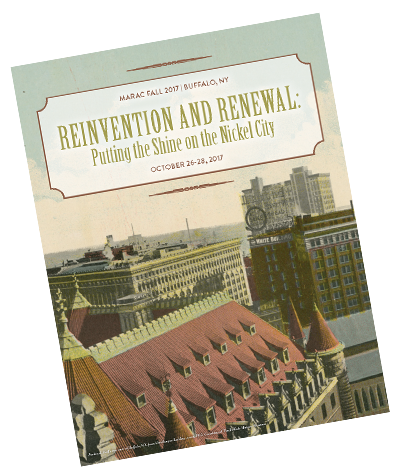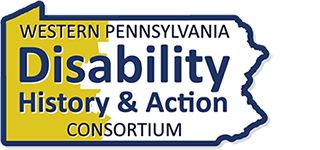
A talk at the October Mid-Atlantic Regional Archives Conference (MARAC) tackled how archives can make their collections more accessible to people with disabilities. Sierra Green, archivist at the Heinz History Center’s Detre Library and Archives and Coalition steering committee member, went to the 90-minute session titled “We Can Improve: Equal Access to Collections for Patrons with Disabilities.”
Three speakers led the discussion, which was part of MARAC’s three-day conference in Buffalo, N.Y. Courtney Yevich Tkacz, of the Virginia Museum of Fine Arts spoke of a project funded by the National Endowment of the Humanities to enhance online access to the museum’s collections. The initiative involved digitizing materials from archival collections as well as artifacts. As Tkacz began to assess the website’s compliance with Americans with Disabilities (ADA) guidelines, she realized that people with hearing and/or vision impairment could not fully engage with the digital collections. Tkacz shared tools and strategies that the museum used to first assess and then enhance the online experience of users with hearing and/or vision impairment.
- An online tool called WAVE (Web Accessibility Evaluation Tool), which evaluates the accessibility of websites and highlights errors.
- Enriching the written descriptions of digitized images or documents via crowdsourcing, volunteers, and professionals trained in audio description.
- Enriching the viewing experience of people with hearing impairment by closed captioning digitized films
Tkacz acknowledged that many organizations are working with limited resources. As a result, some archives may need to prioritize which items and films get the most attention and enhanced description. Tkacz also highlighted the Describing Visual Resources Toolkit developed by the University of Michigan.
A second speaker, Doug Platt from the Museum of disABILITY History in Buffalo, N.Y., gave a history of how the museum came to be established in 1998. The museum was consciously designed to be accessible for people with disabilities. It is possibly the only museum in the U.S. and one of two in the world fully dedicated to the subject of disability history (not counting online-only museums). For those not able to visit, the museum’s website offers a rich online experience along with a listing of traveling exhibits.
Finally, Michael Rembis, Director of the Center for Disability Studies and an Associate Professor of History at the University at Buffalo, reflected on the history of the relatively new and evolving fields of Disability Studies and Disability History. He emphasized the critical role archivists play in collecting and preserving disability history as institutions close.
As Green explains, “The work that is done to tell the history of people with disabilities is predicated on the information that historians can find within archival collections. So we as archivists have a responsibility to ensure that the voices of people with disabilities are strong and are represented in our collections.”
MARAC’s April conference in Hershey, Pa. will include a session about the Pennsylvania State Archives’ collaboration with statewide organizations to preserve the history of institutionalization and the experiences of people with intellectual disabilities in the state. Speakers at that session will include Dana Olsen of the Pennsylvania History Coalition Honoring People with Disability and Lisa Sonneborn of the Institute on Disabilities at Temple University. Both organizations are founding members of the Western Pennsylvania Disability History and Consortium. Read more about the session on page 13 of the conference program.


